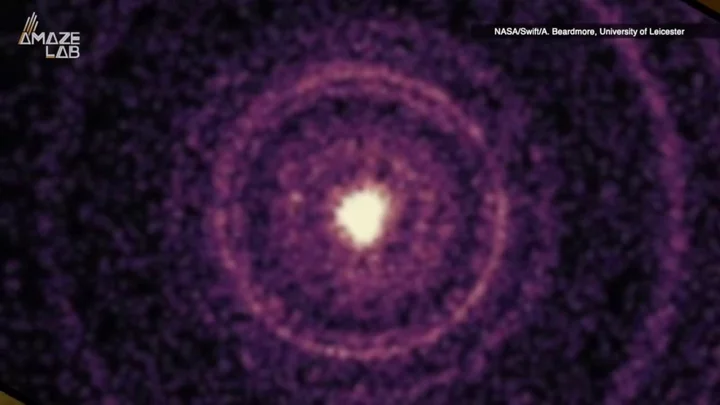A low intergalactic grumbling is emanating from deep space, according to scientists. And no, it’s not the start of the end times.
Astronomers say they detected the first-of-their-kind low frequency ripples, described as a “cosmic bass note” of gravitational waves, which is thought to be caused by supermassive black holes merging across the universe.
The discovery could unveil new secrets about how the monster black holes, which lie at the centre of galaxies, work. The objects are millions – possibly billions – the times the mass of the sun, but little is known about them because no light can escape.
Sign up to our free Indy100 weekly newsletter
“This is huge news,” said Dr Stephen Taylor, chair of the North American Nanohertz Observatory for Gravitational Waves (Nanograv) consortium, which led the team which made the discovery, and an astrophysicist at Nashville’s Vanderbilt University.
Dr Michael Keith, of Jodrell Bank Centre for Astrophysics and a member of the team which helped find the signal, added: “The results presented today mark the beginning of a new journey into the universe to unveil some of its unsolved mysteries.
“We are incredibly excited that after decades of work by hundreds of astronomers and physicists around the world, we are finally seeing the signature of gravitational waves from the distant universe.”
Before the discovery, scientists have only captured short “chirps” of gravitational waves which are linked to the massive objects merging.
But the “bass note” comes after they tuned into a deeper range of frequencies. It is thought to be caused by a single complete gravitational wave travelling at the speed of light.
Astronomers think it is produced by the entire population of supermassive black hole binaries from over roughly the last 8bn years of the universe.
“We think each pair contributes a little wave, which is added to a little wave of another, and all together that is what we may see right now – a sort of murmur of the entire population,” said Prof Alberto Vecchio of the University of Birmingham and a member of the European Pulsar Timing Array.
Prof Andrew Pontzen, a cosmologist at University College London, added: “It’s not often that we get a glimpse of the universe through a totally new lens, but after 15 years of patient work, Nanograv seems to be providing just that. It’s tremendously exciting to see initial evidence for these waves, which will eventually teach us an enormous amount about supermassive black holes, hundreds of millions of times the mass of the sun.”
The findings were published on 29 June by Astrophysical Journal Letters.
Have your say in our news democracy. Click the upvote icon at the top of the page to help raise this article through the indy100 rankings.

